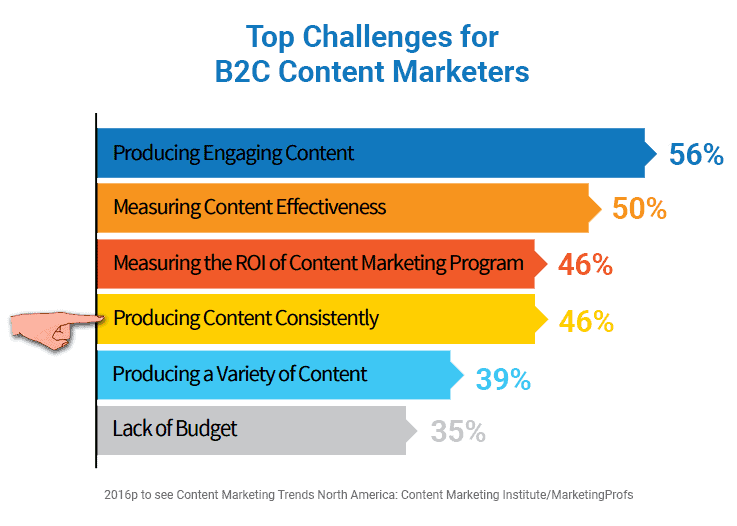Do you want to market your blog to an international audience? Perhaps you want to offer your products and services to a wider demographic, or maybe you just like the idea of reaching people all over the world.
Here are a few tips to grow your following in other countries.
1. Account for your audience’s time zones when publishing and promoting posts
Research shows that the best time to published a blog post is on a Monday morning. However, “Monday morning” in your country may not be “Monday morning” on another continent.
Use Google analytics and similar tools to identify when your readers are most active, and where they are based. You may need to experiment to find the best local time to release your posts and any accompanying promotional content on social media.
2. Be sensitive to cultural differences
If you write purely from your own perspective without consideration for other views, your international readers will quickly feel alienated. Acknowledge that you are writing as an individual raised in a specific time and place.
For instance, if you were raised in a culture that values hard work for its own sake, do not assume that readers of all cultures will automatically applaud people who put in 60-hour work weeks. Don’t be afraid to question your own values and background from time to time.
3. Show you keep up with global events
When targeting people from a specific country, catch up on the latest news from the area before writing a post and acknowledge it in your post if necessary. For instance, if you are writing a blog on business matters, be sure to talk about key trends and market activities in the country you are targeting.
4. Publish your blog in multiple languages
If you are serious about marketing to an audience that does not speak English, you will need to translate your content. There are a couple of ways you can do this:
- You can have multiple versions of the content on the same page, but this could rapidly become overwhelming. It may be a viable option if you only publish very short posts.
- A better solution in most cases is to have two copies of your blog hosted on one site, and let visitors view the version of their choice.
If you have a lot of content on your site besides your blog, it may be simpler to set up two websites. You may choose to give each site its own domain name, or set up one version as a sub-domain of the other.
Note that seemingly trivial differences in spelling can make a difference when it comes to readability and SEO. For example, where Americans may use “z,” Brits and Australians often use “s,” as in “realise” or “personalise.” Decide who your main audience is, and tailor the spellings accordingly.
5. Ask yourself, “How can I tailor this marketing strategy to attract an international audience?”
This question should guide your marketing efforts. For example:
- If you normally use forum marketing to gain traffic, you will need to create new profiles on forums that cater to your target audience.
- If you are a fan of guest posting, you will need to approach new blogs that attract readers from your country of choice.
- If you use influencer marketing, you will need to track down new influencers popular with your new audience.
When going after search engine traffic, cater to the search engine most often used by your intended demographic. For example, in China, the most popular search engine is Baidu. You may need to consult an SEO specialist to make sure you make good use of unfamiliar search algorithms.
6. Interview people from different countries
If you are writing about a social issue or hot topic that is receiving a lot of attention in the press, expand your reach and add depth to your blog by interviewing people from several different countries. You don’t have to endorse their opinions, but diverse perspectives will make your work appealing to a broader range of people.
7. If you have traveled, write honest, gracious blogs about your entries
Do you have interesting travel stories to tell? If you’ve explored other countries and your accounts are a good fit for your blog, write posts about your experiences.
Talk about other cultures in a respectful manner. If you have traveled extensively, discuss the lessons you learned along the way. Make your entries useful for anyone else thinking of following in your footsteps. You may inspire someone to start their own adventure.
8. Be careful when making reference to units and currencies
Don’t overlook the little details. For example, some countries use metric units, whereas others favor the imperial system. Offer currency conversions where appropriate.
You can also make reference to the cost of living where necessary. For instance, the price of a house in London is probably much higher, in both relative and absolute terms, than most other places.
9. Review products and services from around the world
If you run a review site, don’t restrict your coverage to products and services available in your country. Do a little background research on which brands are most popular in other parts of the world.
You don’t have to order items from abroad if doing so would be too expensive, but you should at least demonstrate an understanding of what people in other countries buy. You can summarize other online reviews if you cannot write your own first-hand account.
10. Make it explicit that you want to hear or partner with from people in other countries
Finally, ask other people for their opinions and feedback. If you welcome guest posts, ask your readers to pitch ideas for posts pertaining to their experience living in a specific country.
Writing a blog for an international audience isn’t easy. There are practical and cultural considerations to bear in mind. However, if done correctly, you will soon win praise from readers around the globe.













 Agree with something published in another website or blog? Disagree? Got something if your own? Why not respond through your own blog post or article?
Agree with something published in another website or blog? Disagree? Got something if your own? Why not respond through your own blog post or article?





